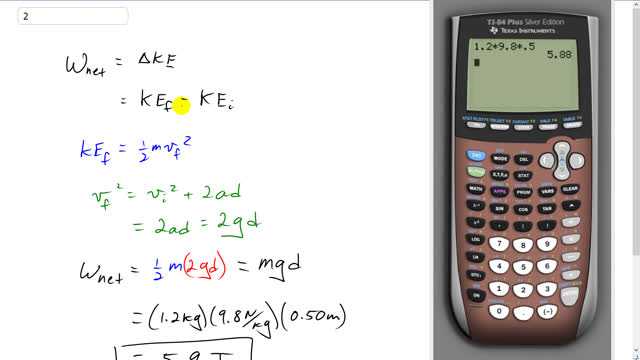
The head of a hammer with a mass of 1.2 kg is allowed to fall onto a nail from a height of 0.50 m. What is the maximum amount of work it could do on the nail? Why do people not just “let it fall” but add their own force to the hammer as it falls?

In order to watch this solution you need to have a subscription.
This is Giancoli Answers with Mr. Dychko. The work-energy principle says that the net work done on the hammer head is gonna equal its change in kinetic energy. And that's gonna be kinetic energy final minus kinetic energy initial but there is no kinetic energy initial because it starts from rest, before it begins falling. And the final kinetic energy is one-half times m times the final velocity squared. Now final velocity squared, we can calculate using this kinematics formula, and it's gonna be initial velocity squared, which is 0 as we already know, plus 2 times acceleration times the height so it's just 2ad and the acceleration is acceleration due to gravity, so I put in g for that and d is the height that the hammer head is falling. So the net work then is substituting up here is gonna be one-half times m times v squared which is 2gd and so we substitute that there, and the 2's cancel giving us that the net work is the weight times the height that the hammer head falls so that's 1.2 kilograms times 9.8 newtons per kilogram times 0.50 meters, which is 5.9 joules. Now, the reason a person using a hammer applies additional force downwards is so that the hammer head has more energy because then it'll have a greater change in kinetic energy because the acceleration won't just be g; the acceleration will be greater than that because of this extra applied force. And work being the ability to do, or energy being the ability to do work, that means with more kinetic energy, more work can get done and the nail will get driven further down in a single stroke, if additional force is applied on it.